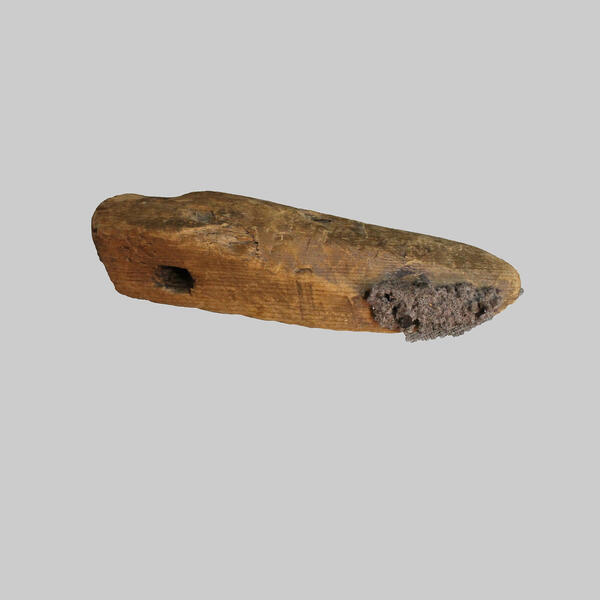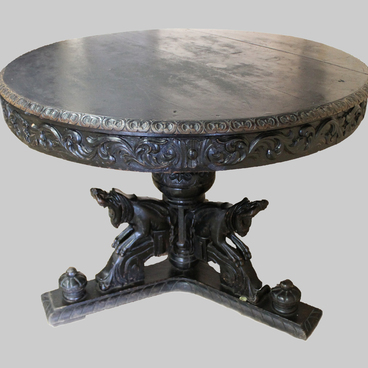The last stored in the museum’s collection is a hand-carved wooden replica of the foot with a round hole through it. The item is in good condition, but there is mechanical damage with traces of darkening and dents on the wood.
A shoe or boot last is a device resembling a human foot for giving shoes the necessary shape in the production process. It is the last that determines the appearance and comfort of shoes.
Even in ancient times, lasts were used for the production of shoes. Master tanners, the so-called “usmari” of the Ancient Rus, sewed leather shoes on wooden lasts. At the same time, shoes on the right and left feet were often cut the same way. It is such soft shoes, as well as bast shoes that the old advice implies: to get rid of the Goblin in the forest, put on shoes from the right foot to the left, and from the left foot to the right.
The most common footwear of the Russian people were bast shoes, which appeared in ancient times. Not only for the peasants, but also for most of the poor townspeople, bast shoes were the only available footwear, and leather boots were a pipe dream. They wove bast shoes using the last. Before starting to weave bast shoes, the bast was soaked, peeled from the bark, and cut into ribbons. Then they took five or six ribbons, formed a string, and started weaving on a special wooden block using a regular hook. Tin was being poured into its weight handle. This handle was easy to use for lining up the netting, thus reaching for greater strength and density. The most difficult task was to weave a heel, i.e. zapyatnik, where all the bast was connected.
For a long time, the pads were made entirely by hand. In 1815, Thomas Blanchard invented a copying lathe for processing irregular objects. At first, the machine was used for the production of gun barrels, and then it began to be used for the manufacture of lasts. Advanced copying lathes are still used in the production of lasts.
Lasts are made of wood, plastic, and metal. At the beginning of the 21st century, manufacturers of lasts prefer plastic, usually polyethylene. Despite the fact that this material is heavier than wood and more expensive than other alternative materials, it is easier to process on machines.
A shoe or boot last is a device resembling a human foot for giving shoes the necessary shape in the production process. It is the last that determines the appearance and comfort of shoes.
Even in ancient times, lasts were used for the production of shoes. Master tanners, the so-called “usmari” of the Ancient Rus, sewed leather shoes on wooden lasts. At the same time, shoes on the right and left feet were often cut the same way. It is such soft shoes, as well as bast shoes that the old advice implies: to get rid of the Goblin in the forest, put on shoes from the right foot to the left, and from the left foot to the right.
The most common footwear of the Russian people were bast shoes, which appeared in ancient times. Not only for the peasants, but also for most of the poor townspeople, bast shoes were the only available footwear, and leather boots were a pipe dream. They wove bast shoes using the last. Before starting to weave bast shoes, the bast was soaked, peeled from the bark, and cut into ribbons. Then they took five or six ribbons, formed a string, and started weaving on a special wooden block using a regular hook. Tin was being poured into its weight handle. This handle was easy to use for lining up the netting, thus reaching for greater strength and density. The most difficult task was to weave a heel, i.e. zapyatnik, where all the bast was connected.
For a long time, the pads were made entirely by hand. In 1815, Thomas Blanchard invented a copying lathe for processing irregular objects. At first, the machine was used for the production of gun barrels, and then it began to be used for the manufacture of lasts. Advanced copying lathes are still used in the production of lasts.
Lasts are made of wood, plastic, and metal. At the beginning of the 21st century, manufacturers of lasts prefer plastic, usually polyethylene. Despite the fact that this material is heavier than wood and more expensive than other alternative materials, it is easier to process on machines.



